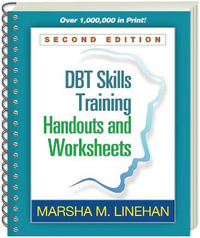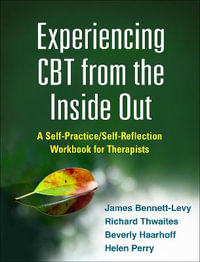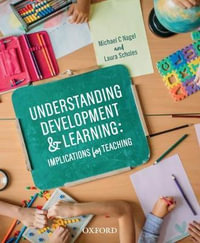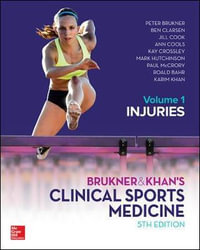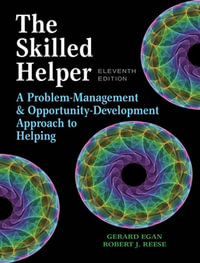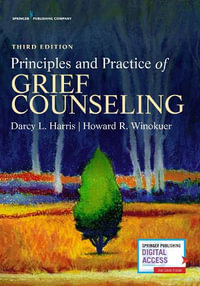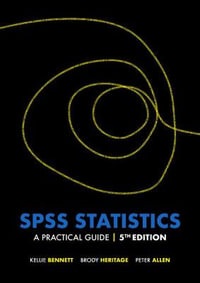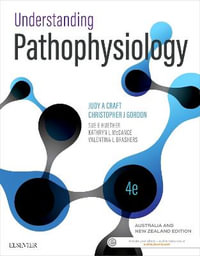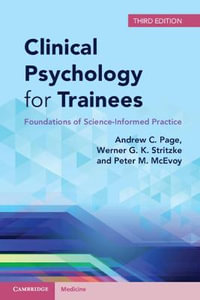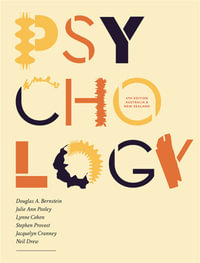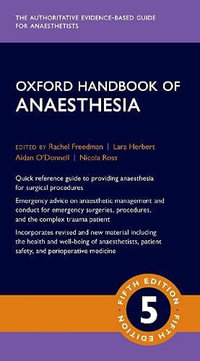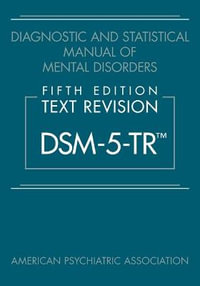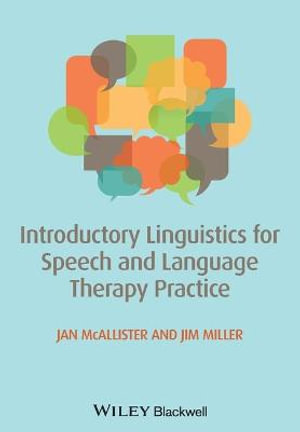
Introductory Linguistics for Speech and Language Therapy Practice
By: Jan McAllister, James E. Miller
Paperback | 14 June 2013 | Edition Number 1
At a Glance
360 Pages
24.5 x 17 x 2
Paperback
RRP $67.95
$44.80
34%OFF
or 4 interest-free payments of $11.20 with
orThis practical introduction to linguistics is a must-have resource for all speech and language therapy students, providing you with the fundamental theory needed as a foundation for practice.
Written by authors with extensive experience in both research and teaching, Introductory Linguistics for Speech and Language Therapy Practice equips you with a practical understanding of relevant linguistic concepts in the key language areas of morphology, syntax, semantics, discourse and pragmatics. Each chapter opens by explaining why the information is of relevance to the speech language therapist, and this integrated approach is emphasised via reference to relevant clinical resources. Exercises throughout each chapter also allow you to test your understanding of key principles and apply this knowledge to other areas of your study.
This concise, readable guide is a core text for all undergraduate and postgraduate students of speech and language therapy, and is also ideal for qualified therapists wanting to enrich their understanding of the linguistic assessments they use in practice.
1 Introduction 1
1.0 Why do speech and language therapy students need to study linguistics? 1
1.1 Why do speech and language therapy students need this book? 2
1.2 Aims of this book, and what this book will not aim to do 3
1.3 Some preliminaries 4
1.3.1 Levels of description in language 5
1.4 How this book is organised 8
1.5 Exercises 9
Exercises using clinical assessments 9
Further reading 9
2 Words and Non-words 10
2.0 Introduction 10
2.1 Why do SLTs need this knowledge? 11
2.2 Learning objectives 12
2.3 Words, word-forms and lexemes 12
2.4 Testing word processing and related abilities 14
2.5 Principles of selection of items in clinical resources 15
2.6 Words and non-words 22
Chapter summary 23
Exercises using clinical resources 24
Further reading 24
3 Word Meaning 25
3.0 Introduction 25
3.1 Why do SLTs need this knowledge? 26
3.2 Learning objectives 26
3.3 Reference and sense 27
3.4 Lexical semantics 28
3.4.1 Lexemes, categories and concepts 28
3.4.2 Decomposition of word meaning 29
3.4.3 Basic concepts 31
3.4.4 Semantic fields 32
3.4.5 Sense relations 34
3.4.6 Lexical ambiguity 37
Chapter summary 38
Exercises using clinical resources 39
Further reading 40
4 Sentence Meaning 41
4.0 Introduction 41
4.1 Why do SLTs need this knowledge? 41
4.2 Learning objectives 42
4.3 Sentence-level meaning 42
4.3.1 Semantic roles 44
4.3.2 Reversibility 47
4.3.3 Contradiction 49
4.3.4 Syntactic ambiguity 50
Chapter summary 51
Exercises using clinical resources 51
Further reading 52
5 Parts of Speech 53
5.0 Introduction 53
5.1 Why do SLTs need this knowledge? 54
5.2 Learning objectives 54
5.3 Identifying parts of speech 55
5.3.1 Content words and function words 55
5.3.2 Why is it sometimes difficult to identify parts of speech in English? 55
5.3.3 Traditional, meaning-based criteria 57
5.3.4 Form-based criteria 57
5.3.5 Tests for parts of speech 61
Chapter summary 83
Exercises using clinical resources 83
Further reading 84
6 Word Structure 85
6.0 Introduction 85
6.1 Why do SLTs need this knowledge? 86
6.2 Learning objectives 86
6.3 Words and morphemes 87
6.4 Free and bound forms 89
6.5 Allomorphs 90
6.6 Common mechanisms of word formation in English 92
6.6.1 Compounding 92
6.6.2 Affixation 94
6.7 Mean length of utterance in morphemes 104
Chapter summary 104
Exercises using clinical resources 105
Further reading 106
7 Sentence Structure 1: Phrases and Clauses 107
7.0 Introduction 107
7.1 Why do SLTs need this knowledge? 108
7.2 Learning objectives 109
7.3 Syntax, morphology and the lexicon 109
7.4 Phrases 110
7.4.1 Criteria for phrases 111
7.4.2 Types of phrases 112
7.4.3 Heads, modifiers and phrase types 113
7.4.4 Phrases: noun phrases 114
7.4.5 Phrases: prepositional phrases 115
7.4.6 Phrases: adjective phrases 116
7.4.7 Phrases: adverb phrases 116
7.4.8 Phrases: verb phrases 117
7.5 Clauses 118
7.5.1 Elements of the clause 119
7.5.2 Elements of the clause: verb 121
7.5.3 Elements of the clause: subject 121
7.5.4 Elements of the clause: object 123
7.5.5 Elements of the clause: complement 127
7.5.6 Elements of the clause: adverbial 129
7.5.7 Phrases and grammatical functions 131
7.5.8 Notation for clauses 131
Chapter summary 133
Exercises using clinical resources 133
Further reading 134
8 Sentence Structure 2: Constructions and Main Clauses 135
8.0 Introduction 135
8.1 Why do SLTs need this knowledge? 136
8.2 Learning objectives 137
8.3 Declarative, interrogative and imperative clauses 137
8.3.1 Basic constructions: declarative clauses 138
8.3.2 Imperative clauses 139
8.3.3 Interrogative clauses: yes–no interrogatives 140
8.3.4 Interrogative clauses: wh interrogatives 141
8.3.5 Interrogative clauses: tag questions 141
8.4 The active, passive and middle constructions 143
8.4.1 Active clauses/constructions 143
8.4.2 Passive clauses/constructions 144
8.4.3 Middle clauses/constructions 145
8.5 Negation 147
Chapter summary 151
Exercises using clinical resources 152
Further reading 152
9 Sentence Structure 3: Subordinate Clauses and Sentences 153
9.0 Introduction 153
9.1 Why do SLTs need this knowledge? 153
9.2 Learning objectives 154
9.3 Main and subordinate clauses 154
9.4 Recognising different types of subordinate clause 155
9.4.1 Relative clauses 155
9.4.2 Adverbial clauses 156
9.4.3 Complement clauses 157
9.5 Clauses that modify nouns 159
9.6 Optional extra on relative clauses 161
9.7 Sentences 165
Chapter summary 166
Exercises using clinical resources 168
Further reading 168
10 Sentence Structure 4: Non-finite Clauses 169
10.0 Introduction 169
10.1 Why do SLTs need this knowledge? 170
10.2 Learning outcomes 170
10.3 Infinitives and (Type 1) gerunds 170
10.3.1 Understood subject and control 172
10.4 Type 2 gerunds 173
10.5 Bare-verb clauses 175
10.6 Free participle clauses 175
10.7 Reduced clauses 176
Chapter summary 179
Exercises using clinical resources 180
Further reading 180
11 Language in Use 1: Deixis and Reference 181
11.0 Introduction 181
11.1 Why do SLTs need this knowledge? 181
11.2 Learning objectives 182
11.3 Reference and deixis 182
11.3.1 Deixis: introduction 183
11.3.2 Deixis: personal pronouns 184
11.3.3 Deixis: demonstratives 186
11.3.4 Deixis: spatial expressions 188
11.3.5 Deixis: verbs of movement 189
11.3.6 Deixis: temporal expressions 191
11.3.7 Deixis: tense 193
11.3.8 Deixis: extended uses 194
11.4 Reference 197
Chapter summary 202
Exercises using clinical resources 202
Further reading 203
12 Language in Use 2: Frames and Scripts, Metaphor and Irony, Implicature, Explicature 204
12.0 Introduction 204
12.1 Why do SLTs need this knowledge? 205
12.2 Learning outcomes 206
12.3 Frames and scripts 206
12.4 Metaphor, irony, humour 209
12.5 Implicature 211
12.6 Explicature 216
12.7 Presupposition 219
Chapter summary 221
Exercises using clinical resources 222
Further reading 222
13 Language in Use 3: Speech Acts, Conversation 223
13.0 Introduction 223
13.1 Why do SLTs need this knowledge? 224
13.2 Learning objectives 224
13.3 Frames, scripts and norms 224
13.4 Speech acts 226
13.5 Conversation: scripts and routines 233
13.5.1 Turn taking 233
13.5.2 Adjacency pairs 234
13.5.3 Expansions 235
13.5.4 Preference organisation 236
13.5.5 Opening a conversation 237
13.5.6 Politeness 238
13.5.7 Topic management 238
13.5.8 Repair 241
13.6 Paralinguistic signals 244
Chapter summary 246
Exercises using clinical resources 246
Further reading 247
14 Narrative 1: Introduction – Coherence and Cohesion 248
14.0 Introduction 248
14.1 Why do SLTs need this knowledge? 249
14.2 Learning objectives 249
14.3 Tasks for speakers and writers 250
14.4 Concepts for analysing narrative 250
14.5 Spoken text 252
14.6 Coherence and cohesion 254
14.6.1 Coherence 254
14.6.2 Cohesion 255
Chapter summary 259
Exercises using clinical resources 260
Further reading 260
15 Narrative 2: Given and New, Theme, Focus 261
15.0 Introduction 261
15.1 Why do SLTs need this knowledge? 261
15.2 Learning objectives 262
15.3 Given and new information 262
15.4 Theme 264
15.5 Focus 270
15.5.1 Focus: tonic accent 270
15.5.2 Focus: IT clefts 272
15.5.3 Focus: WH clefts 274
15.5.4 Focus: TH clefts 275
15.6 Conclusion 276
Chapter summary 277
Exercises using clinical resources 278
Further reading 278
16 Narrative 3: Syntax and the Organisation of Text 279
16.0 Introduction 279
16.1 Why do SLTs need this knowledge? 279
16.2 Learning objectives 280
16.3 Tense and aspect in narrative 280
16.3.1 Tense and aspect: reminder of the main points 280
16.3.2 Simple Past versus Progressive in narrative 281
16.3.3 Perfect 281
16.3.4 Tense and aspect: problems of usage 282
16.4 Analysing clinical test narratives 283
16.4.1 The runaway tractor story 283
16.4.2 The safari park story 286
16.4.3 The sports day story 286
16.4.4 The squirrel story 287
16.5 Some loose ends 288
16.5.1 End weight 288
16.5.2 End weight: extraposition 288
16.5.3 Passives in narrative text 290
16.5.4 Non-finite clauses 292
Chapter summary 294
Exercises using clinical resources 294
17 Conclusion 297
Appendix A: Islands of Reliability for Determining Parts of Speech 299
Appendix B: SLT Resources Referenced in This Text 302
Answers to Exercises 306
Annotated Bibliography 343
Index 345
ISBN: 9780470671108
ISBN-10: 0470671106
Published: 14th June 2013
Format: Paperback
Language: English
Number of Pages: 360
Audience: Professional and Scholarly
Publisher: John Wiley & Sons (UK)
Country of Publication: GB
Edition Number: 1
Dimensions (cm): 24.5 x 17 x 2
Weight (kg): 0.65
Shipping
| Standard Shipping | Express Shipping | |
|---|---|---|
| Metro postcodes: | $9.99 | $14.95 |
| Regional postcodes: | $9.99 | $14.95 |
| Rural postcodes: | $9.99 | $14.95 |
How to return your order
At Booktopia, we offer hassle-free returns in accordance with our returns policy. If you wish to return an item, please get in touch with Booktopia Customer Care.
Additional postage charges may be applicable.
Defective items
If there is a problem with any of the items received for your order then the Booktopia Customer Care team is ready to assist you.
For more info please visit our Help Centre.
You Can Find This Book In
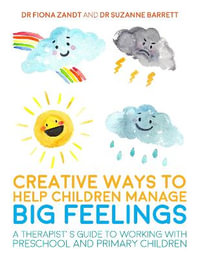
Creative Ways to Help Children Manage BIG Feelings
A Therapist's Guide to Working with Preschool and Primary Children
Paperback
RRP $66.99
$57.50
OFF

FREE SHIPPING
RRP $109.95
$15.50
OFF
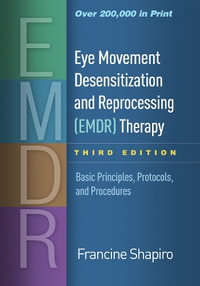
Eye Movement Desensitization and Reprocessing (EMDR) Therapy
Basic Principles, Protocols, and Procedures 3rd Edition
Hardcover
RRP $161.00
$138.00
OFF

Intentional Interviewing and Counseling
10th Edition - Facilitating Client Development in a Multicultural Society
Paperback
RRP $139.95
$115.90
OFF
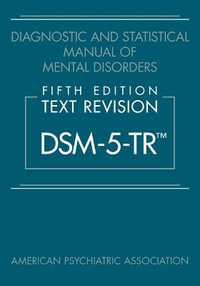
Diagnostic and Statistical Manual of Mental Disorders 5/e TR (DSM-5-TR)
Diagnostic and Statistical Manual of Mental Disorders
Hardcover
RRP $347.00
$307.75
OFF
This product is categorised by
- Non-FictionMedicineMedicine in GeneralPublic Health & Preventive Medicine
- Non-FictionLanguage & LinguisticsLinguistics
- Non-FictionMedicineOther Branches of MedicineTherapy & TherapeuticsSpeech & Language Disorders & Therapy
- Non-FictionPsychologyPhysiological & Neuro-Psychology, Biopsychology
- Non-FictionMedicineOther Branches of Medicine


